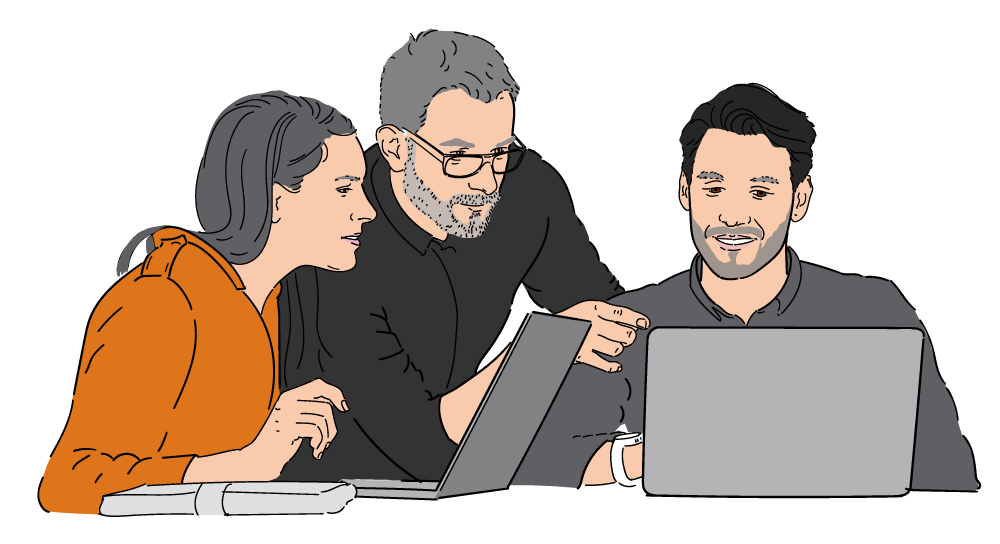AUTOSAR
INCHRON provides tools and services for simulating and analysing the real-time behavior of AUTOSAR classic and adaptive platform systems. We use an event-chain centric approach, model-based simulation and trace-based analysis:
- Optimize AUTOSAR dynamic architecture
- Find issues 12 month earlier
AUTOSAR timing simulation and analysis
If you wish to get more information regarding this topic, feel free to contact us.






Tackling Timing in
AUTOSAR Applications
Thanks to its broad adoption across the automotive industry, AUTOSAR is a well-established and standardized software architecture. But, despite its modularity, structure, and hardware independence, it is not immune from timing challenges.
In fact, because most developers only have an overview of a small part of an AUTOSAR application, often without source code, tracking down the cause of timing issues can be exceptionally challenging.
Importing AUTOSAR Classic Platform
into chronSUITE
With AUTOSAR Classic Platform (CP) almost universally in use across the automotive industry, and as an active Development Member, INCHRON continuously works on such projects with its customers. Most teams already have a working prototype in place or a previous design that forms a starting point for a new product.
Much of the information of the software architecture needed to analyze an application is already modeled in AUTOSAR tools that can be exported as ARXML. For example, the operating system (OS) and ECU (MCU/SoC) configuration, contain the tasks and ISRs incl. relevant parameters. This information can be used in chronSUITE to understand the application’s architecture.
The critical details acquired are the list of tasks and runnables on the system. Furthermore, cyclical information and the interrupts in use are also relevant.
Adding Timing Information
While an ARXML file contains much information, there are no details on the execution time of the software. However, it is critical to understand whether a runnable will complete in a timely manner when, for example, many interruptions occur during a critical operation.
Furthermore, it’s not enough to have a simple number for execution time. What’s needed is an understanding of the minimum and maximum execution times and under what circumstances they occur.
Such information can be extracted from trace data captured from a running AUTOSAR application. If some software packages are new and haven’t been used on the chosen MCU or SoC thus far, execution times can initially be estimated and corrected as the project progresses.
Typical AUTOSAR Timing Challenges
There are a broad range of timing issues that arise in AUTOSAR Classic Platform applications. One of the most often occurring relates to drifting clocks. While quartz-based oscillators are pretty accurate, they do drift with temperature changes. This can lead to issues in intra-MCU communication on a printed circuit board or problems during data transfers between electronic control units (ECU).
Multicore processors help increase the available processing power for complex applications. But because AUTOSAR CP applications are statically defined, the assignment of tasks and runnables to cores must be fixed during development. Under some operational conditions, the chosen core can become overloaded, resulting in the failure to complete runnable execution in the required timeframe.
Then there are the chains of execution, known as event chains, as sensor data passes through the vehicle for processing before becoming an actuator movement. The vast number of interdependencies involved cannot simply be modeled in a spreadsheet. Neither can the impact of delays in receiving data in sensor fusion blocks, causing decisions to be made based using old data.
Resolving AUTOSAR Timing Issues
Existing AUTOSAR projects can be imported into chronSUITE for analysis, allowing dynamic testing of the application to discover the conditions under which it fails to function as required. Once found, remedial efforts, such as assigning a task to a different core or changing interrupt priorities, can be simulated before rebuilding the code and deploying it to hardware. Furthermore, timing tests can be added to the project to ensure future code development doesn’t cause issues, just like a functional test.
Of course, you don’t have to wait until you discover a functional failure hiding behind a timing problem. chronSUITE can be used in the development of AUTOSAR applications from the beginning, enabling system architects to determine timing budgets alongside functional requirements. INCHRON users see a significant decrease in development time and a major reduction in hard-to-solve development issues because everyone, from the OEM and Tier 1 through to all contributing partners, has the same awareness for timing.
On the Pulse of AUTOSAR Development
INCHRON, as an AUTOSAR Development Member, is actively involved in both Classic Platform and Adaptive Platform, raising awareness for timing issues in automotive applications. Furthermore, the team is on the pulse of the improvements and changes you and your team will benefit from in future projects.
If you’re looking for ways to speed up AUTOSAR application development and swiftly resolve the timing issues that arise, use the form below to get in touch with us – we’ll be happy to answer your questions and provide a demonstration of the chronSUITE set of tools in the context of AUTOSAR.

Let us discuss AUTOSAR
Schedule a meeting and we can talk about this important issue.

